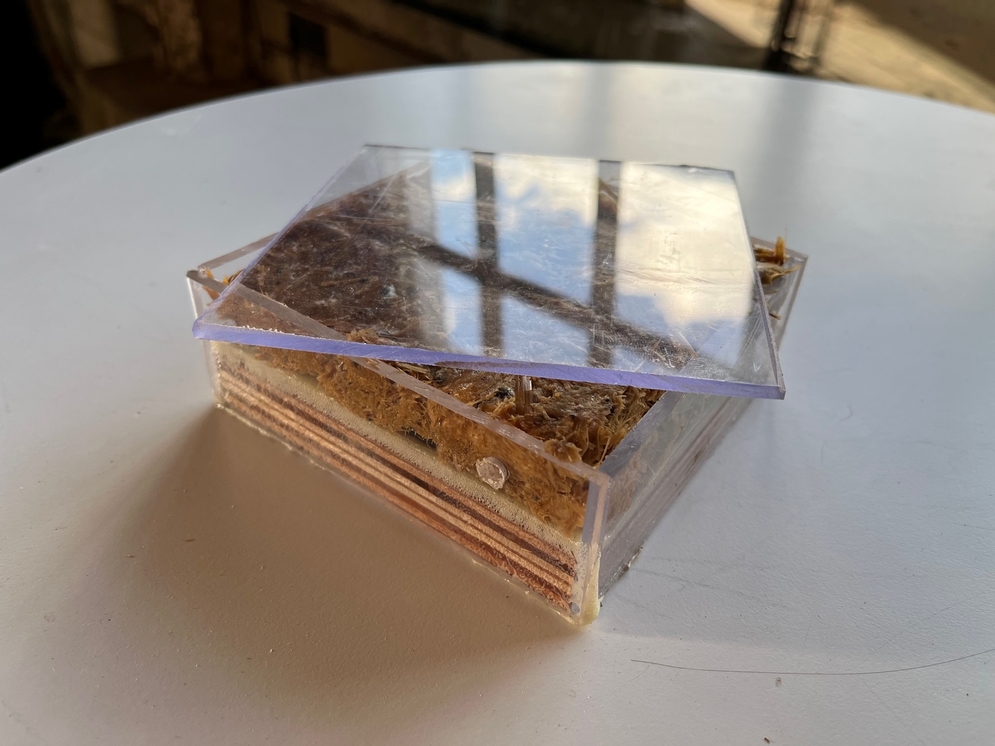One of the latest examples of this tendency is our attempts to use living materials like mycelium to create objects that we can use in our daily lives. Mycelium-based insulation, for instance, has been promoted as a sustainable and eco-friendly alternative to traditional insulation materials. But is it eco-friendly if we first kill the mycelium so we can use it for a human purpose.
However, in our rush to find new and trendy solutions to our everyday problems, we seem to have forgotten an important fact: mycelium is a living organism. It is not some passive substance that we can shape and manipulate at will. It is a complex and intricate network of threads that plays a vital role in the ecosystem it inhabits.
In this project I tried to find an eco-friendly way to keep mycelium living but when we try to turn mycelium into insulation or coasters, we are essentially trying to turn a living organism into an object. This is a stupid approach that ignores the inherent value and complexity of the natural world. By trying to make mycelium into something that humans can use, like boxing it in acryllic glass to form a coaster, we are robbing it of its essential nature and reducing it to a commodity.
Our attempts to use mycelium in this way may have unintended consequences. By disrupting the delicate balance of the ecosystem in which mycelium thrives, we could be doing irreparable damage to the natural world on the long run.
While it may be tempting to try and make living materials like mycelium into objects that we can use, we must resist this urge. It is a fundamentally flawed approach that ignores the inherent value and complexity of the natural world. Instead, we should focus on finding ways to live in harmony with the world around us, rather than trying to bend it to our will.
